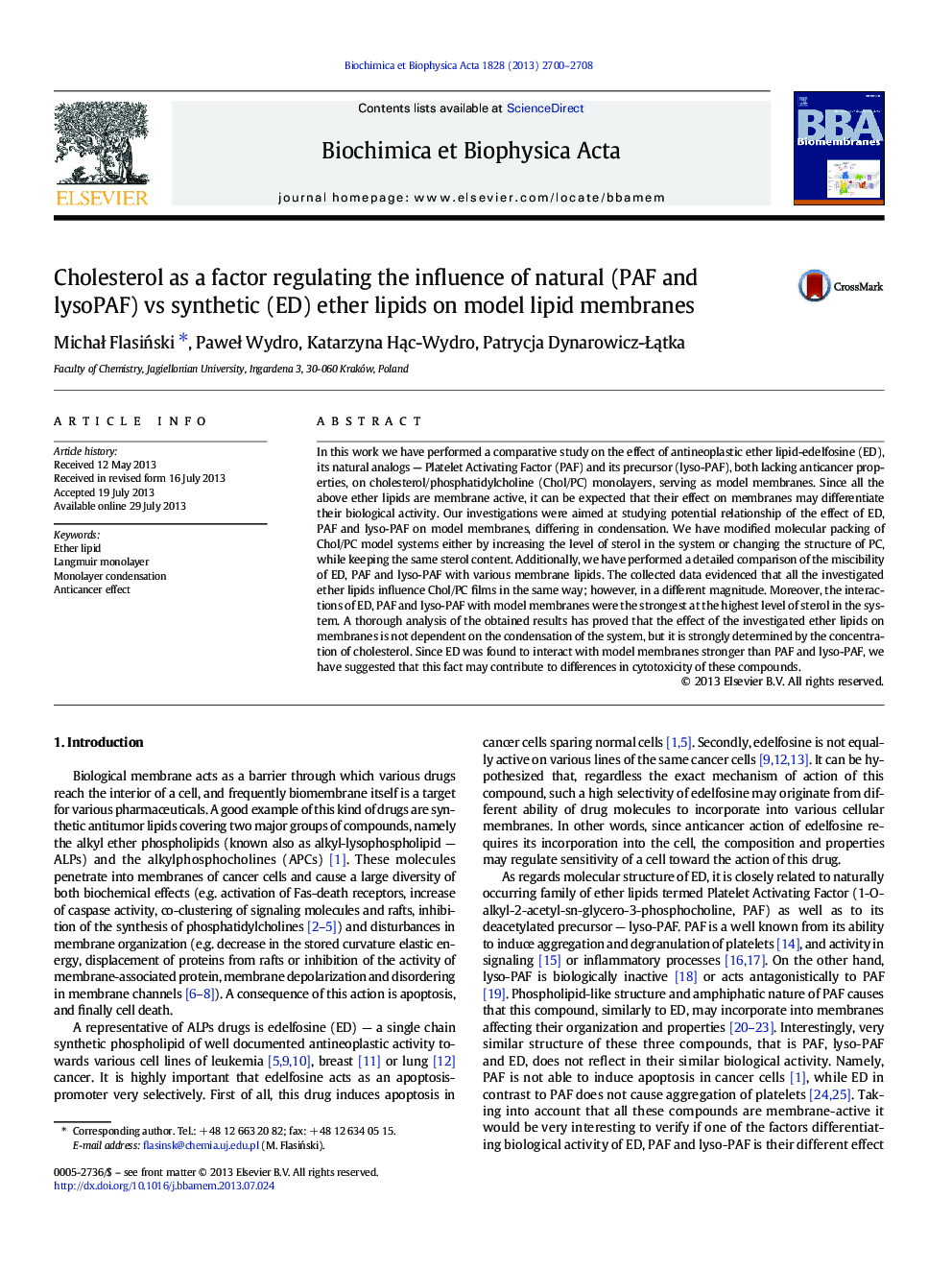| Article ID | Journal | Published Year | Pages | File Type |
|---|---|---|---|---|
| 1944314 | Biochimica et Biophysica Acta (BBA) - Biomembranes | 2013 | 9 Pages |
•Effect of bioactive ether lipids: PAF, lyso-PAF and edelfosine on model membranes•Cholesterol concentration determines activity of ether lipids in model membrane.•Edelfosine interacts much stronger with model membranes than PAF and lyso-PAF.•Effect of ether lipids depends on films composition but not on their condensation.
In this work we have performed a comparative study on the effect of antineoplastic ether lipid-edelfosine (ED), its natural analogs — Platelet Activating Factor (PAF) and its precursor (lyso-PAF), both lacking anticancer properties, on cholesterol/phosphatidylcholine (Chol/PC) monolayers, serving as model membranes. Since all the above ether lipids are membrane active, it can be expected that their effect on membranes may differentiate their biological activity. Our investigations were aimed at studying potential relationship of the effect of ED, PAF and lyso-PAF on model membranes, differing in condensation. We have modified molecular packing of Chol/PC model systems either by increasing the level of sterol in the system or changing the structure of PC, while keeping the same sterol content. Additionally, we have performed a detailed comparison of the miscibility of ED, PAF and lyso-PAF with various membrane lipids. The collected data evidenced that all the investigated ether lipids influence Chol/PC films in the same way; however, in a different magnitude. Moreover, the interactions of ED, PAF and lyso-PAF with model membranes were the strongest at the highest level of sterol in the system. A thorough analysis of the obtained results has proved that the effect of the investigated ether lipids on membranes is not dependent on the condensation of the system, but it is strongly determined by the concentration of cholesterol. Since ED was found to interact with model membranes stronger than PAF and lyso-PAF, we have suggested that this fact may contribute to differences in cytotoxicity of these compounds.
Graphical abstractFigure optionsDownload full-size imageDownload high-quality image (202 K)Download as PowerPoint slide
